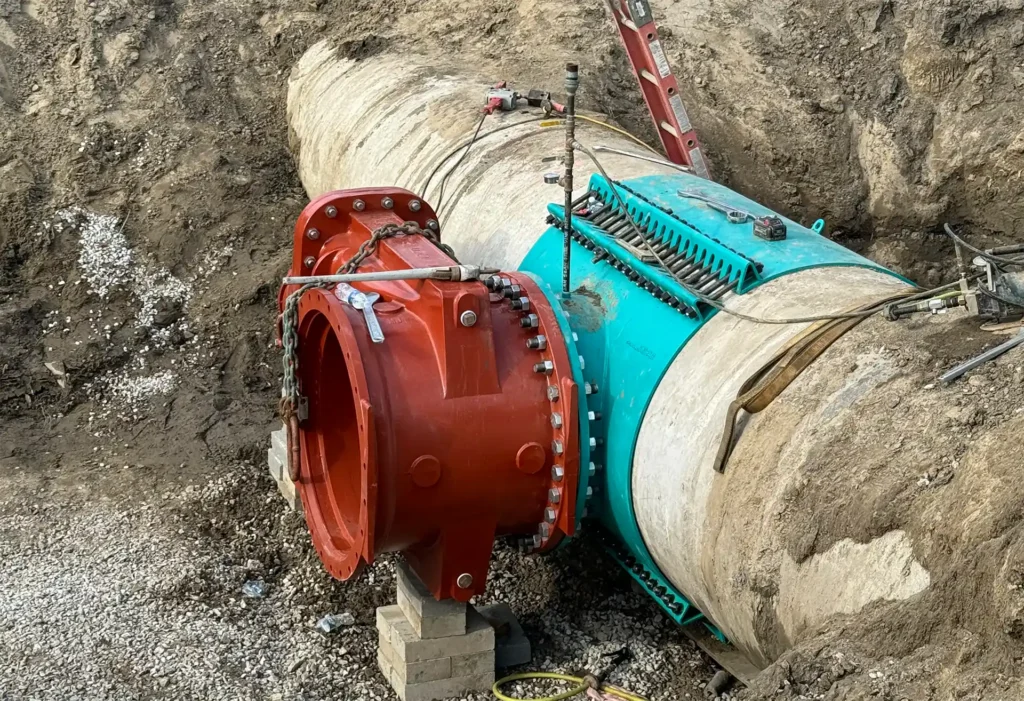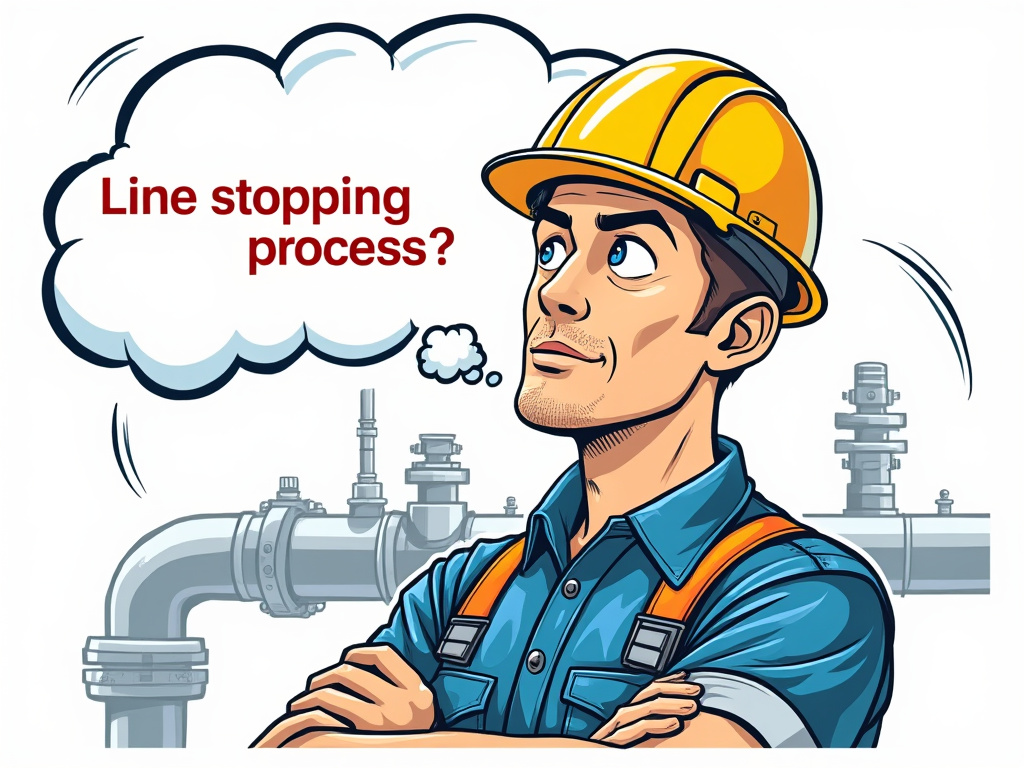In industries where continuous service is critical—such as water utilities, sewer, and municipal infrastructure—pipeline maintenance must typically occur without disrupting operations. Line stopping is an innovative process used in pipeline maintenance to isolate specific sections of a line without disrupting the flow of water, or other substances. By creating a temporary shut-off point, line stopping allows for targeted repairs or modifications while the rest of the system stays fully operational.

Key Takeaways Of What Line Stopping Is
Minimal Disruption: Line stopping isolates sections of pipeline for repairs or modifications without interrupting the entire system, maintaining service for customers.
Cost Efficiency: This method prevents costly shutdowns, saving on labor and operational expenses by keeping the pipeline active during maintenance.
Enhanced Safety: By isolating only the targeted section, line stopping reduces risks associated with depressurizing large pipeline segments, ensuring safer conditions for workers.
Versatility Across Applications: Suitable for various tasks, including valve replacements, emergency repairs, and system expansions, making line stopping adaptable to a wide range of infrastructure needs.
Environmental Impact: Line stopping avoids draining the pipeline, which reduces water loss and environmental impact.

Why Is Line Stopping Important?
In growing municipalities and industries, line stopping prevents costly shutdowns, minimizes service interruptions, and mitigates potential safety risks for both workers and the community. Traditional shutdown methods can result in backflow, potential contamination, and lost revenue.
Line stopping was developed to mitigate these issues while providing a safer, controlled alternative, reducing downtime and supporting continuous service for critical infrastructure systems.
Understanding the Line Stopping Process
Line stopping requires precision and expertise, involving a series of steps to ensure safe and effective isolation. Here’s an overview of the process:

- Preparation and Assessment: A detailed assessment of the pipeline’s characteristics—size, material, and pressure—is conducted. This allows the selection of the right equipment and strategy for the job and ensures the process unfolds smoothly.
- Hot Tapping: An entry point is created in the pressurized pipeline using hot tapping. This involves attaching a tapping sleeve and valve to the pipeline and drilling into it without disrupting flow. The hot tap provides a secure entry point for inserting the line stopping device.
- Installing the Line Stop Fitting: A specialized fitting is attached to the pipeline, and temporary valves are added to manage pressure and flow. This enables precise isolation of the repair section while maintaining control over the pipeline system.
- Deploying the Line Stop Plug: Using a line stop machine, a plug is inserted through the fitting to block flow in the designated section. The plug forms a tight seal, isolating the area where work needs to be completed.
- Repair and Restoration: With the area isolated, teams can perform necessary repairs or replacements. Once completed, the plug is removed, and a completion plug and blind flange are installed to restore normal operations.
Common Applications of Line Stopping
Line stopping’s adaptability and non-disruptive nature make it a valuable technique across industries. Typical applications include:
- Valve Replacements and Insertions: Valve insertions enable new valves to be installed or old ones replaced without shutting down the pipeline, enhancing system control.
- Emergency Repairs: In the event of a leak or rupture, line stopping quickly isolates the issue, facilitating a safe and efficient repair while minimizing resource loss.
- Pipe Section Replacement: Allows individual pipe segments to be replaced or repaired without affecting the broader system.
- System Expansion: New lines or tie-ins can be added to accommodate growing infrastructure demands without impacting existing service.
Benefits of Line Stopping
Line stopping is favored for its ability to support uninterrupted service, especially in critical applications. Key benefits include:
- Continuous Operation: Maintenance can be conducted without shutting down the system, ensuring minimal service disruption.
- Cost Savings: Prevents revenue loss, reduces downtime costs, and maximizes labor efficiency by isolating only the affected section.
- Enhanced Safety: By isolating specific sections, line stopping reduces the risks associated with depressurizing entire pipelines, minimizing hazards for workers.
- Environmental Protection: Since line stopping doesn’t require draining the pipeline, it reduces the risk of resource loss and minimizes environmental impact.
Types of Line Stopping Techniques
Line stopping methods vary based on project requirements, offering flexibility in different scenarios:
- Single Line Stop: Used to isolate a single section of pipeline, ideal for smaller repairs or modifications.
- Double Line Stop with Bypass: Two line stops are positioned on either side of the work area with a bypass installed, allowing pressure relief while keeping the system operational.
Choosing the Right Line Stopping Provider
The success of a line stopping project hinges on partnering with an experienced provider with the right tools, technology, and expertise. Look for companies with a proven record of safe, efficient pipeline solutions and specialized knowledge in managing complex infrastructure. Providers like Watertap Inc. leverage advanced equipment, including Hydra-Stop systems and JCM fittings, to ensure projects are completed safely, on time, and with uninterrupted service.
Conclusion
Line stopping is essential for industries that rely on consistent service. By offering an efficient, safe, and cost-effective method to maintain pipelines without shutting down entire systems, line stopping has become the go-to solution for municipalities, utilities, and industries. Watertap Inc., with over 20 years of expertise, is committed to providing dependable line stopping solutions that meet the diverse needs of clients and ensure uninterrupted service.
